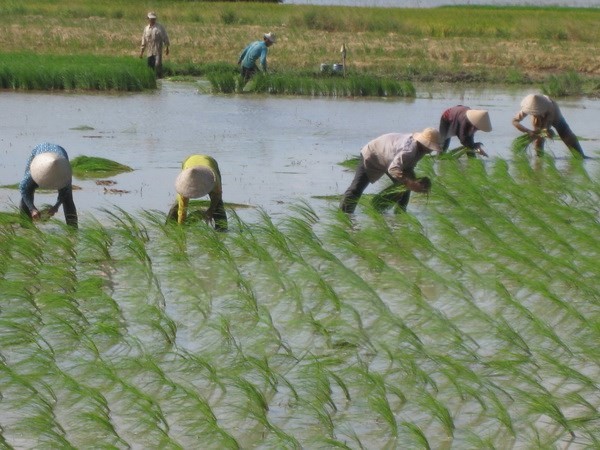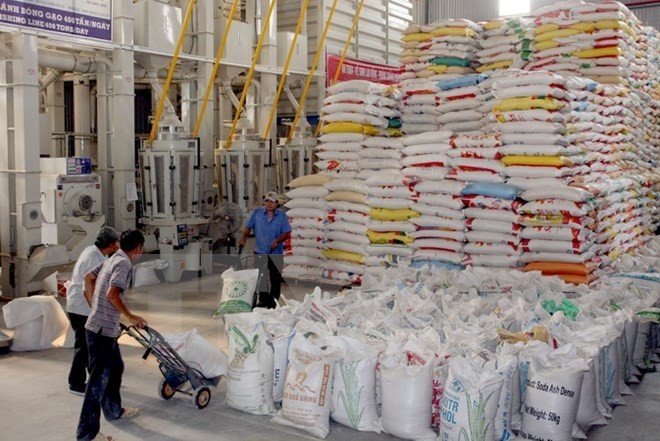(VOVworld) – For many years Vietnam has proven to be as one of the world’s leading rice exporters but profits remain low because product branding has not been developed and quality has been unreliable. This issue topped the agenda of a recent conference held by the Ministry of Industry and Trade to find a way to improve rice exports this year.

Vietnam, the world's third-largest rice exporter after Thailand, is expected to suffer slight fall in paddy yield and rice production this year due to impacts of El Nino.
(Photo: Thanh Liem/ VNA/VNS)
|
Last year Vietnam exported 6.6 million tons of rice worth more than 2.8 billion SD in revenue, up 4% in quantity but down 4.5% in export value.
Vietnam’s rice exports in 2016 are forecast to decline due to El Nino causing prolonged drought and saltwater intrusion. The lack of water for irrigation has increased epidemic diseases and reduced the quality of Vietnamese rice and its competitiveness against rice from other countries in the region.
Realizing the risk of strong dependence on certain markets, local rice exporters have tried to expand to new markets in Europe, the US, Japan, and the Republic of Korea. But these are demanding markets and only 27% of Vietnam’s exported rice is high quality.
Tran Tuan Anh, Deputy Minister of Industry and Trade, underscored quality, branding, and trade promotion as keys to increasing the value of Vietnamese rice.
“Vietnamese exporters need more help from the state, especially the Food Association in developing markets. This is a requirement set by the Ministry of Industry and Trade in renovating ways to promote trade for farm produce like rice to match each market,” he said.
To date Vietnamese rice exporters have signed contracts to export more than 1 million tons. Although it is a positive signal, the current situation still forces Vietnamese rice trading companies to keep China as its major export market. Meanwhile, in order to boost exports to high-end markets Vietnam should actively invest in improving rice varieties, developing more large-scale fields, building trademarks, and expanding trade promotion programs.

Improving quality and building a national brand name for Vietnamese rice is essential to securing a firm foothold in the international market, experts have commented. (Photo: baothanhhoa.vn)
|
Huynh The Nang, chairman of the Vietnam Food Association (VFA), said “we’ve defined the development of value chains in line with the improvement rice quality and brand building. A specific plan will be completed in the first quarter.”
Domestic rice exporters hope that trade counselors will provide them more market information and that the Ministry of Trade and Industry will help farmers and enterprises in accessing to processing industry and investing in laboratories of international standards in the Mekong Delta.
According to Nguyen Trung Kien, President of the Gentraco Corporation, “the VFA and trade counselors should continue to support businesses with information on quality management, food safety, and plant quarantine, the TPP roadmap for rice products, tariff policy, commercial disputes, and technical barriers.”
The VFA and rice exporters all agree that to improve the rice value and be able to sell for demanding markets, there’s no other way to step up the brand building for Vietnamese rice.